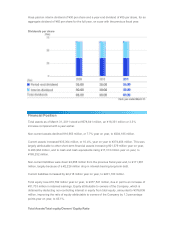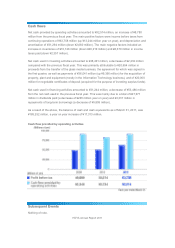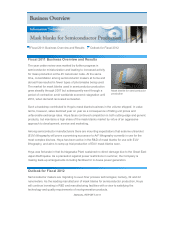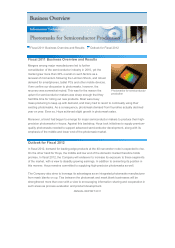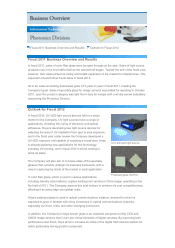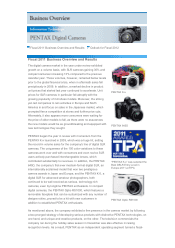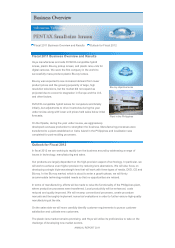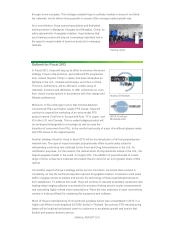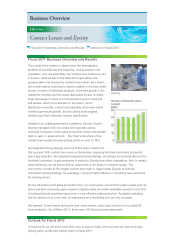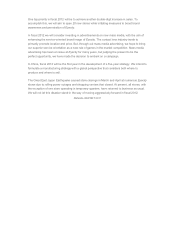Pentax 2011 Annual Report Download - page 34
Download and view the complete annual report
Please find page 34 of the 2011 Pentax annual report below. You can navigate through the pages in the report by either clicking on the pages listed below, or by using the keyword search tool below to find specific information within the annual report.
pursue as a manufacturer. Hoya forecasts mass production in 500GB to start in the second half
of 2012.
Moreover, we expect the notebook PC market to gather momentum in the second half of 2012.
A
part from the traditional Christmas sales season, the Chinese New Year has recently begun to
boost demand in January and February. Previously, January and February saw a drop-off in
demand. We will remain on the lookout to capture this new demand.
Topics
In HDD recording media, developers are working on new
technologies to increase storage capacity. At present,
perpendicular magnetic recording is being used to
improve recording capacity by aligning the poles of
magnetic writing elements perpendicular to the recording
layer. New technologies that hold the promise of
achieving even greater storage densities of one terabyte
per square inch include discrete track recording1 and
assist recording2. Although it remains to be seen which
among these technologies will become mainstream, mass
production of the next generation of media is projected to begin in around 2013. As a
leading glass disk company, Hoya is working actively to develop materials and processing
technologies for next-generation media.
1:In this method, channels are created between the tracks of the recording material to
reduce the magnetic interference between adjacent tracks. It is expected that this will
enable higher areal recording density.
2:In this method, lasers are used to locally apply heat to the recording medium before
writing to reduce the magnetic coercive force.
Mold for Discrete track
recording media
ANNUAL REPORT 2011


